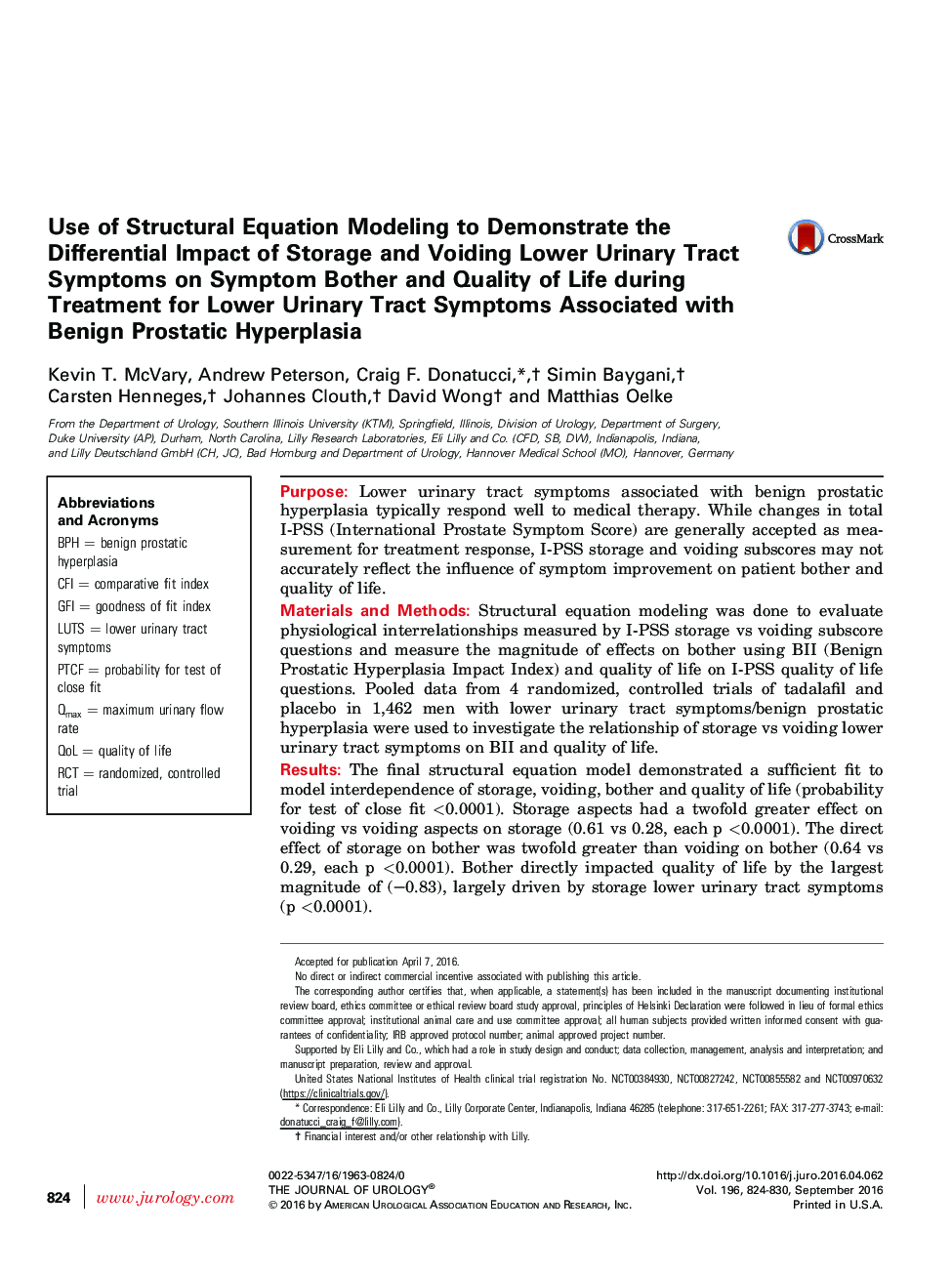| Article ID | Journal | Published Year | Pages | File Type |
|---|---|---|---|---|
| 3857876 | The Journal of Urology | 2016 | 7 Pages |
PurposeLower urinary tract symptoms associated with benign prostatic hyperplasia typically respond well to medical therapy. While changes in total I-PSS (International Prostate Symptom Score) are generally accepted as measurement for treatment response, I-PSS storage and voiding subscores may not accurately reflect the influence of symptom improvement on patient bother and quality of life.Materials and MethodsStructural equation modeling was done to evaluate physiological interrelationships measured by I-PSS storage vs voiding subscore questions and measure the magnitude of effects on bother using BII (Benign Prostatic Hyperplasia Impact Index) and quality of life on I-PSS quality of life questions. Pooled data from 4 randomized, controlled trials of tadalafil and placebo in 1,462 men with lower urinary tract symptoms/benign prostatic hyperplasia were used to investigate the relationship of storage vs voiding lower urinary tract symptoms on BII and quality of life.ResultsThe final structural equation model demonstrated a sufficient fit to model interdependence of storage, voiding, bother and quality of life (probability for test of close fit <0.0001). Storage aspects had a twofold greater effect on voiding vs voiding aspects on storage (0.61 vs 0.28, each p <0.0001). The direct effect of storage on bother was twofold greater than voiding on bother (0.64 vs 0.29, each p <0.0001). Bother directly impacted quality of life by the largest magnitude of (–0.83), largely driven by storage lower urinary tract symptoms (p <0.0001).ConclusionsTotal I-PSS is a reliable instrument to assess the therapeutic response in lower urinary tract symptoms/benign prostatic hyperplasia cases. However, an improvement in storage lower urinary tract symptoms is mainly responsible for improved bother and quality of life during treatment. Care should be taken when evaluating the accuracy of I-PSS subscores as indicators of the response to medical therapy.
